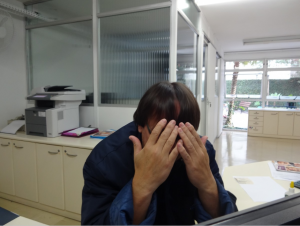Back to blog
Hazukashii and mittomonai- How to convey embarrassment and shame in Japanese

How do you describe an embarrassing or shameful action it Japanese? What is the difference between “hazukashii” and “mittomonai“?
Hazukashii
When learning a new language, you are going to put your foot in your mouth at times. A comment you believed to be innocuous may be completely inappropriate instead. What you feel afterwards is 恥ずかしい [hazukashii], or embarrassment at your misstep. What would an apology for this kind of error look like?

ごめんなさい! そういう意味で言ったんじゃないんだ。恥ずかしい。
Gomen’nasai! Souiu imide ittanjanainda. Hazukashii.
I’m sorry! I didn’t mean it in that way. What an embarrassing thing to say.
大丈夫だよ。 あなたが言いたいことは分かったよ。
Daijōbudayo. Anataga iitaikotowa wakattayo.
It’s fine, I understand what you want to say.
This is how you would deal with something that is a slight embarrassment.
Mittomonai
When this happens, you may hear people describe the behavior as みっともない [mittomonai]. This term is stronger that 恥ずかしい. You would use it to describe somebody’s poor behavior rather than something that was an accident. Let’s see a scenario.

あれ見た? あの男の人、地面にゴミを捨てたよ。
Are mita? Ano otoko no hito, jimen ni gomi o suteta yo.
Did you see that? That man dumped his trash on the ground.
うん、どうしてあんなみっともないことができるのか全く理解できないよ。
Un, doushite anna mittomonai kotoga dekirunoka mattaku rikai dekinaiyo.
Yes, I’m not sure how people can behave so shamefully.
The main difference between hazukashii and mittomonai is the gravity of the words. Hazukashii is more about simple embarrassment, whereas mittomonai is more serious and shameful.
To learn more about Japanese etiquette, click here.

